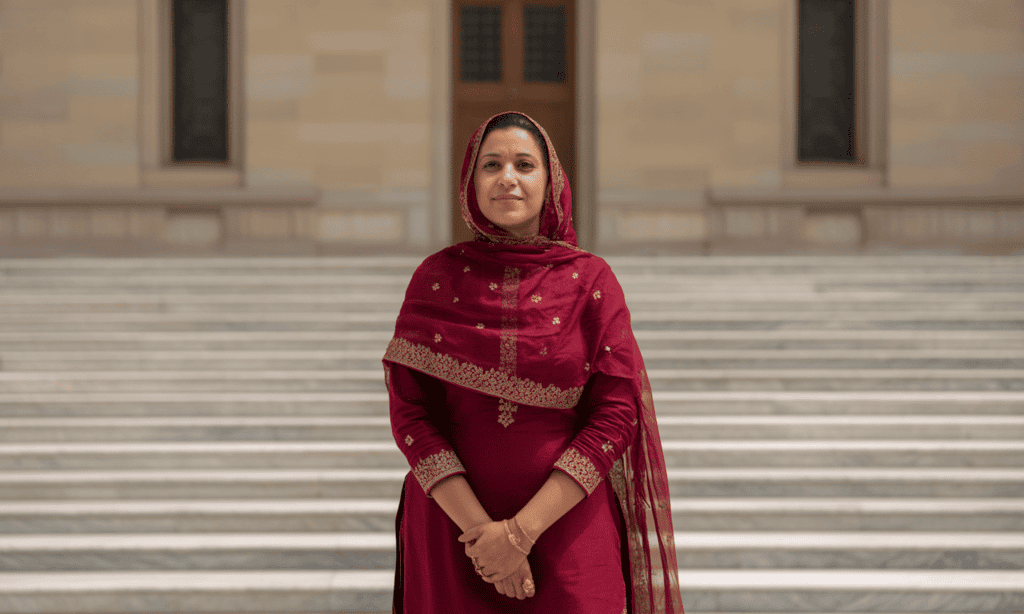CLAT Exam > CLAT Notes > Legal Reasoning for CLAT > Major Legal Judgements for Family Law
Major Legal Judgements for Family Law | Legal Reasoning for CLAT PDF Download
1. Saroj Rani v. Sudarshan Kumar (1984) – Restitution of Conjugal Rights
- Facts: Saroj Rani sought restitution of conjugal rights under Section 9, Hindu Marriage Act, 1955, after her husband withdrew from her society without reasonable cause.
- Issues: Is Section 9 constitutional? Can restitution be enforced without violating personal liberty?
- Principle: Section 9 is constitutional, aiming to preserve marriage; restitution requires proof of unreasonable withdrawal, but enforcement cannot infringe fundamental rights.
- Judgment: The Supreme Court upheld Section 9, granting restitution, as the husband lacked a reasonable excuse.
- Significance: This case affirmed the validity of restitution, balancing marital obligations with personal freedom.
2. Lata Singh v. State of UP (2006) – Inter-Caste Marriage
- Facts: Lata, a Hindu, married a man from a different caste, facing family opposition and harassment. She sought protection under Article 21.
- Issues: Can adults freely choose their spouse? Does family opposition justify interference?
- Principle: Adults have the right to marry by choice under Article 21; state and family cannot interfere absent legal grounds.
- Judgment: The Supreme Court directed protection for the couple, condemning family interference.
- Significance: This case reinforced marital autonomy, protecting inter-caste and inter-religious marriages.
3. Shayara Bano v. Union of India (2017) – Triple Talaq

- Facts: Shayara Bano challenged the practice of instant triple talaq under Muslim Personal Law as unconstitutional, seeking its ban.
- Issues: Is triple talaq constitutional? Does it violate gender equality under Articles 14 and 15?
- Principle: Triple talaq, being arbitrary and discriminatory, violates fundamental rights and is not protected under religious freedom (Article 25).
- Judgment: The Supreme Court declared triple talaq unconstitutional, leading to the 2019 Muslim Women (Protection of Rights on Marriage) Act.
- Significance: This landmark case advanced gender justice, reforming Muslim divorce practices.
4. Smt. Seema v. Ashwani Kumar (2006) – Marriage Registration
- Facts: A dispute over a marriage’s validity led to a petition for mandatory registration of marriages to prevent fraud and denial.
- Issues: Should marriage registration be mandatory? Can states enforce uniform registration?
- Principle: Mandatory registration of marriages protects spouses’ rights and prevents disputes, permissible under personal laws.
- Judgment: The Supreme Court directed all states to implement mandatory marriage registration.
- Significance: This case standardized marriage registration, enhancing legal clarity and protection.
5. Githa Hariharan v. Reserve Bank of India (1999) – Guardianship
- Facts: Githa challenged Section 6, Hindu Minority and Guardianship Act, 1956, which prioritized fathers as natural guardians, as discriminatory.
- Issues: Is prioritizing fathers as guardians constitutional? Does it violate gender equality?
- Principle: Both parents are natural guardians; prioritizing fathers violates Article 14, requiring equal treatment.
- Judgment: The Supreme Court held mothers as equal guardians, interpreting “after” in Section 6 as “in the absence of.”
- Significance: This case promoted gender equality in guardianship, reforming Hindu personal law.
6. Danial Latifi v. Union of India (2001) – Muslim Women’s Maintenance
- Facts: The Muslim Women (Protection of Rights on Divorce) Act, 1986, was challenged for limiting maintenance to the iddat period, allegedly violating Article 14.
- Issues: Does the 1986 Act deny reasonable maintenance? Is it constitutional?
- Principle: Muslim women are entitled to fair maintenance beyond iddat under the 1986 Act, consistent with Section 125, CrPC, and Article 14.
- Judgment: The Supreme Court upheld the Act, interpreting it to allow maintenance for life or until remarriage.
- Significance: This case ensured maintenance rights for Muslim women, harmonizing personal and secular laws.
7. Naveen Kohli v. Neelu Kohli (2006) – Irretrievable Breakdown of Marriage
- Facts: Naveen sought divorce under Section 13, Hindu Marriage Act, citing irretrievable breakdown due to mutual hostility.
- Issues: Is irretrievable breakdown a ground for divorce? Can courts grant divorce absent statutory grounds?
- Principle: Irretrievable breakdown, though not a statutory ground, can justify divorce under judicial discretion to prevent hardship.
- Judgment: The Supreme Court granted divorce, recognizing the marriage’s breakdown.
- Significance: This case paved the way for recognizing irretrievable breakdown, influencing divorce law reforms.
8. Shamim Ara v. State of UP (2002) – Talaq Validity
- Facts: A husband pronounced talaq without witnesses or reconciliation attempts. The wife challenged its validity under Muslim Personal Law.
- Issues: Is talaq valid without procedure? What are the requirements for valid talaq?
- Principle: Talaq must follow due process, including reconciliation attempts and witnesses, to be valid under Shariat.
- Judgment: The Supreme Court declared the talaq invalid, protecting the wife’s rights.
- Significance: This case reformed talaq practices, ensuring procedural fairness for Muslim women.
9. Vinita Saxena v. Pankaj Pandit (2006) – Mental Cruelty
- Facts: Vinita sought divorce under Section 13, Hindu Marriage Act, alleging mental cruelty due to her husband’s behavior and false accusations.
- Issues: What constitutes mental cruelty? Can it justify divorce?
- Principle: Mental cruelty, including sustained emotional harm or false allegations, is a ground for divorce under Section 13(1)(ia).
- Judgment: The Supreme Court granted divorce, finding evidence of mental cruelty.
- Significance: This case expanded the scope of cruelty, facilitating divorce for emotional abuse.
10. Laxmibai v. Ayodhya Prasad (1970) – Hindu Adoption
- Facts: A widow adopted a child under the Hindu Adoptions and Maintenance Act, 1956. The adoption was challenged for lacking her husband’s consent.
- Issues: Can a widow adopt without spousal consent? What are the requirements for valid adoption?
- Principle: A widow can adopt independently under Section 8, Hindu Adoptions and Maintenance Act, if the adoption complies with statutory conditions.
- Judgment: The Supreme Court upheld the adoption, affirming the widow’s right.
- Significance: This case clarified women’s adoption rights, promoting gender equality.
11. Mary Roy v. State of Kerala (1986) – Christian Succession
- Facts: Mary Roy challenged the Travancore Christian Succession Act, 1916, for denying equal inheritance to Christian women, seeking application of the Indian Succession Act, 1925.
- Issues: Does the 1916 Act violate equality? Should the 1925 Act apply to Christians?
- Principle: Discriminatory succession laws violate Article 14; the Indian Succession Act, 1925, applies to Christians for equal inheritance.
- Judgment: The Supreme Court struck down the 1916 Act, applying the 1925 Act.
- Significance: This case ensured gender-equal inheritance for Christians, reforming succession laws.
12. D. Velusamy v. D. Patchaiammal (2010) – Live-in Relationships
- Facts: Patchaiammal sought maintenance under the Protection of Women from Domestic Violence Act, 2005, claiming a live-in relationship akin to marriage.
- Issues: Are live-in partners entitled to maintenance? What constitutes a “relationship in the nature of marriage”?
- Principle: Live-in relationships resembling marriage qualify for maintenance under the 2005 Act, if cohabitation is long-term and domestic.
- Judgment: The Supreme Court recognized the relationship, granting maintenance.
- Significance: This case extended protections to live-in partners, modernizing family law.
13. Savitri Pandey v. Prem Chandra Pandey (2002) – Desertion

- Facts: Savitri sought divorce under Section 13, Hindu Marriage Act, alleging desertion by her husband, who left without intent to return.
- Issues: What constitutes desertion? Can it be a ground for divorce?
- Principle: Desertion requires permanent abandonment without consent or cause, justifying divorce under Section 13(1)(ib).
- Judgment: The Supreme Court granted divorce, confirming desertion.
- Significance: This case clarified desertion, strengthening grounds for divorce.
14. Prakash v. Phulavati (2015) – Hindu Succession
- Facts: A daughter claimed equal coparcenary rights under the Hindu Succession (Amendment) Act, 2005, in ancestral property, opposed by male heirs.
- Issues: Does the 2005 Amendment apply retrospectively? Are daughters equal coparceners?
- Principle: The 2005 Amendment grants daughters equal coparcenary rights but applies prospectively to living coparceners as of 2005.
- Judgment: The Supreme Court held the amendment non-retrospective, denying the claim.
- Significance: This case clarified the 2005 Amendment’s scope, later modified by *Vineeta Sharma*.
15. Vineeta Sharma v. Rakesh Sharma (2020) – Coparcenary Rights
- Facts: Vineeta sought equal coparcenary rights under the Hindu Succession (Amendment) Act, 2005, challenging *Prakash v. Phulavati*’s non-retrospective ruling.
- Issues: Are daughters equal coparceners regardless of their father’s death before 2005? Is the amendment retrospective?
- Principle: Daughters have equal coparcenary rights under Section 6, Hindu Succession Act, retrospectively, irrespective of their father’s death.
- Judgment: The Supreme Court overruled *Prakash*, granting retrospective rights.
- Significance: This case ensured gender equality in Hindu succession, reforming inheritance law.
16. Lily Thomas v. Union of India (2000) – Bigamy
- Facts: A petition challenged conversions to Islam for second marriages, alleging circumvention of Section 494, IPC, and Hindu Marriage Act.
- Issues: Does conversion permit bigamy? Is bigamy lawful under personal law?
- Principle: Conversion to Islam does not dissolve a prior marriage; bigamy violates Section 494, IPC, and Section 17, Hindu Marriage Act.
- Judgment: The Supreme Court declared such marriages void, upholding anti-bigamy laws.
- Significance: This case curbed misuse of conversion for bigamy, protecting marital rights.
17. Shabana Bano v. Imran Khan (2009) – Maintenance under CrPC
- Facts: Shabana, a divorced Muslim woman, sought maintenance under Section 125, CrPC, beyond the iddat period, opposed by her ex-husband.
- Issues: Can Muslim women claim maintenance under Section 125, CrPC, post-iddat? Does the 1986 Act override CrPC?
- Principle: Section 125, CrPC, applies to Muslim women for lifelong maintenance, supplementing the 1986 Act, per Article 14.
- Judgment: The Supreme Court granted maintenance, affirming Section 125’s applicability.
- Significance: This case strengthened maintenance rights for Muslim women, ensuring economic security.
18. Joseph Shine v. Union of India (2018) – Adultery
- Facts: Section 497, IPC, criminalizing adultery, was challenged as discriminatory for punishing only men and treating women as property.
- Issues: Is Section 497 constitutional? Does it violate gender equality and privacy?
- Principle: Adultery laws violating equality (Article 14) and privacy (Article 21) are unconstitutional; marriage is a civil contract, not a state-controlled institution.
- Judgment: The Supreme Court struck down Section 497, decriminalizing adultery.
- Significance: This case modernized family law, promoting gender equality and personal autonomy.
19. ABC v. State (NCT of Delhi) (2015) – Unwed Mothers’ Guardianship
- Facts: An unwed Christian mother sought sole guardianship of her child, opposed by the state citing the father’s rights.
- Issues: Can an unwed mother be the sole guardian? Do personal laws override child welfare?
- Principle: An unwed mother can be the sole guardian under the Guardians and Wards Act, 1890, prioritizing child welfare over paternal rights.
- Judgment: The Supreme Court granted guardianship to the mother, affirming her rights.
- Significance: This case protected unwed mothers’ rights, prioritizing child welfare.
20. X v. Y (2024) – Same-Sex Marriage
- Facts: A same-sex couple sought legal recognition of their marriage under the Special Marriage Act, 1954, challenging its heteronormative framework.
- Issues: Does the Special Marriage Act exclude same-sex couples? Is exclusion unconstitutional?
- Principle: Excluding same-sex couples from marriage violates equality (Article 14) and non-discrimination (Article 15), per *Navtej Johar* principles.
- Judgment: The Supreme Court directed the government to consider same-sex marriage recognition, leaving legislative action pending.
- Significance: This 2024 case advanced LGBTQ+ rights, pushing for inclusive marriage laws.
The document Major Legal Judgements for Family Law | Legal Reasoning for CLAT is a part of the CLAT Course Legal Reasoning for CLAT.
All you need of CLAT at this link: CLAT
|
63 videos|174 docs|38 tests
|
Related Searches
















